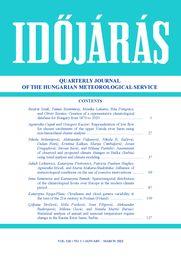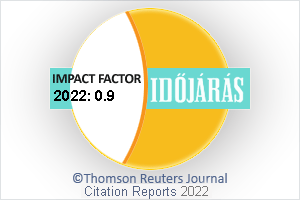IDŐJÁRÁS - angol nyelvű folyóirat
Vol. 126, No. 1 * Pages 1–157 * January - March 2022
 |
|
 letöltés [pdf: 5215 KB]
letöltés [pdf: 5215 KB]
Creation of a representative climatological database for Hungary from 1870 to 2020
Beatrix Izsák, Tamás Szentimrey, Mónika Lakatos, Rita Pongrácz, and Olivér Szentes
DOI:10.28974/idojaras.2022.1.1 (pp. 1–26)
Beatrix Izsák, Tamás Szentimrey, Mónika Lakatos, Rita Pongrácz, and Olivér Szentes
DOI:10.28974/idojaras.2022.1.1 (pp. 1–26)
IDŐJÁRÁS folyóirat

Az IDŐJÁRÁS a HungaroMet Nonprofit Zrt. negyedévenként megjelenő angol nyelvű folyóirata
Megrendelhető a journal.idojaras@met.hu címen.
A szerzőknek szánt útmutató itt olvasható.
Megrendelhető a journal.idojaras@met.hu címen.
A szerzőknek szánt útmutató itt olvasható.









